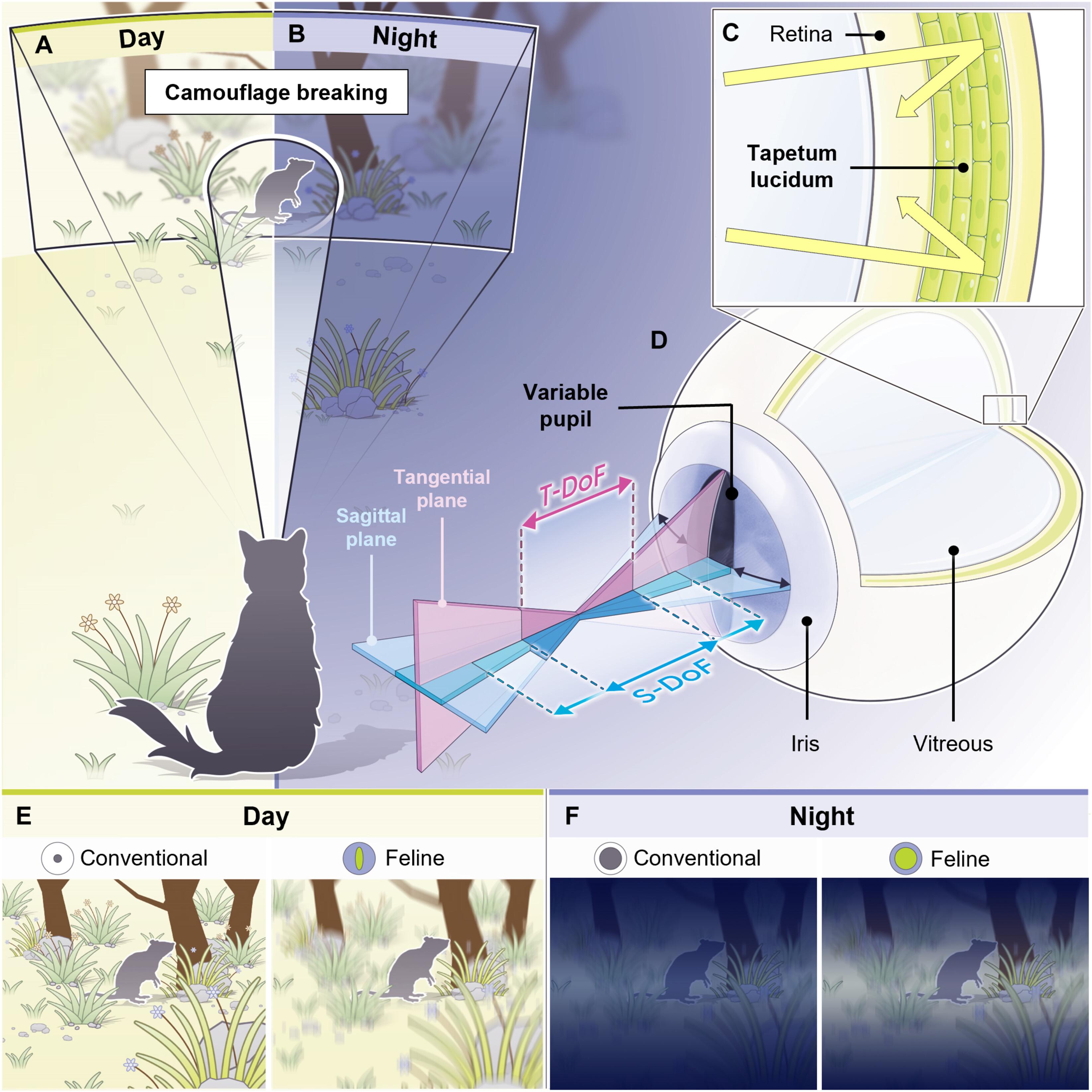Feline eye–inspired artificial vision for enhanced camouflage breaking under diverse light conditions
IF 11.7
1区 综合性期刊
Q1 MULTIDISCIPLINARY SCIENCES
引用次数: 0
Abstract
Biologically inspired artificial vision research has led to innovative robotic vision systems with low optical aberration, wide field of view, and compact form factor. However, challenges persist in object detection and recognition against complex backgrounds and varied lighting. Inspired by the feline eye, which features a vertically elongated pupil and tapetum lucidum, this study introduces an artificial vision system designed for superior object detection and recognition in a monocular framework. Using a slit-like elliptical aperture and a patterned metal reflector beneath a hemispherical silicon photodiode array, the system reduces excessive light and enhances photosensitivity. This design achieves clear focus under bright light and enhanced sensitivity in dim conditions. Theoretical and experimental analyses demonstrate the system’s ability to filter redundant information and detect camouflaged objects in diverse lighting, representing a substantial advancement in monocular camera technology and the potential of biomimicry in optical innovations.

猫眼启发的人工视觉,可在不同光线条件下增强伪装破译能力
受生物学启发的人工视觉研究已开发出具有低光学像差、宽视场和紧凑外形的创新型机器人视觉系统。然而,在复杂背景和不同光照条件下进行物体检测和识别仍然是一项挑战。猫眼的特点是瞳孔垂直拉长并有透明带,受猫眼的启发,本研究介绍了一种人工视觉系统,旨在单目框架内实现卓越的物体检测和识别。该系统在半球形硅光电二极管阵列下使用狭缝式椭圆光圈和图案化金属反射器,可减少过量光线并提高光敏性。这种设计实现了在强光下清晰聚焦和在昏暗条件下提高灵敏度。理论和实验分析表明,该系统能够过滤冗余信息,并在不同光线下探测伪装物体,这代表了单目照相机技术的巨大进步,以及生物仿生学在光学创新方面的潜力。
本文章由计算机程序翻译,如有差异,请以英文原文为准。
求助全文
约1分钟内获得全文
求助全文
来源期刊

Science Advances
综合性期刊-综合性期刊
CiteScore
21.40
自引率
1.50%
发文量
1937
审稿时长
29 weeks
期刊介绍:
Science Advances, an open-access journal by AAAS, publishes impactful research in diverse scientific areas. It aims for fair, fast, and expert peer review, providing freely accessible research to readers. Led by distinguished scientists, the journal supports AAAS's mission by extending Science magazine's capacity to identify and promote significant advances. Evolving digital publishing technologies play a crucial role in advancing AAAS's global mission for science communication and benefitting humankind.
 求助内容:
求助内容: 应助结果提醒方式:
应助结果提醒方式:


